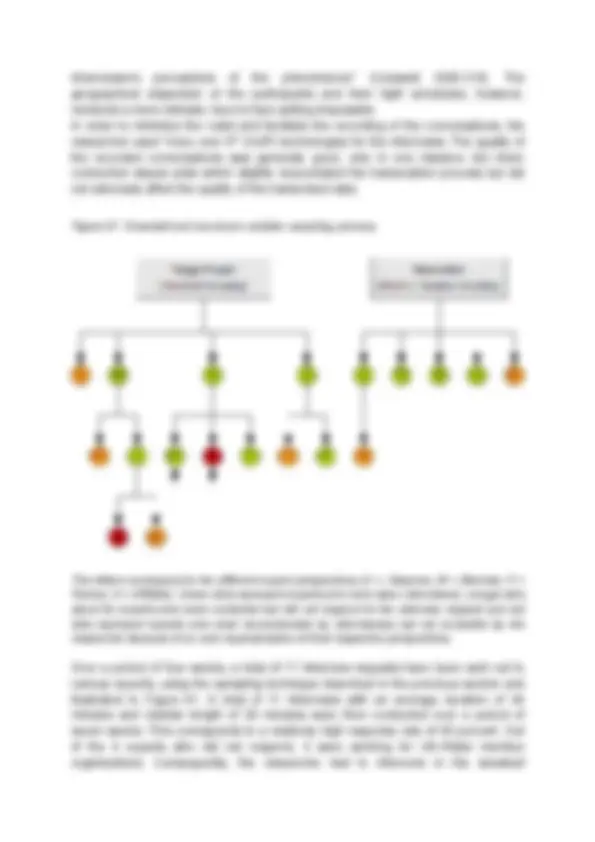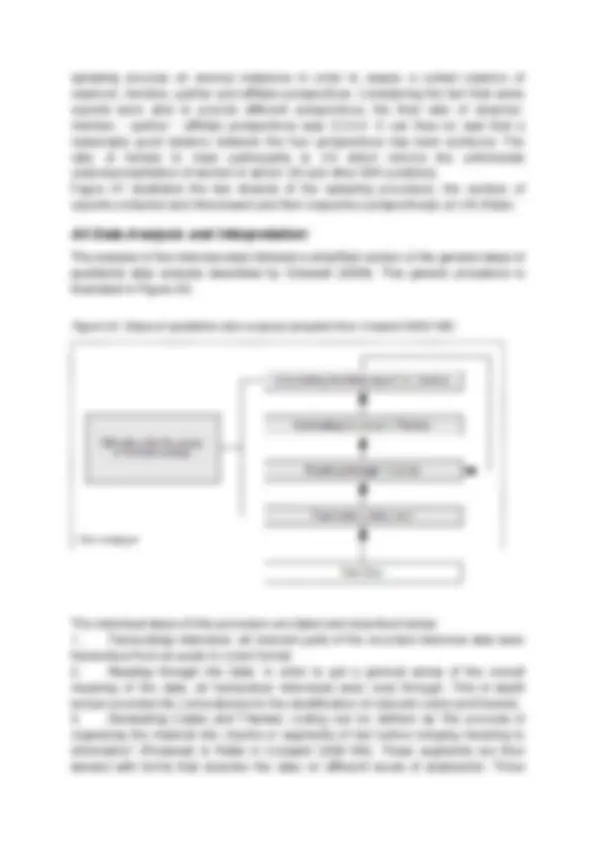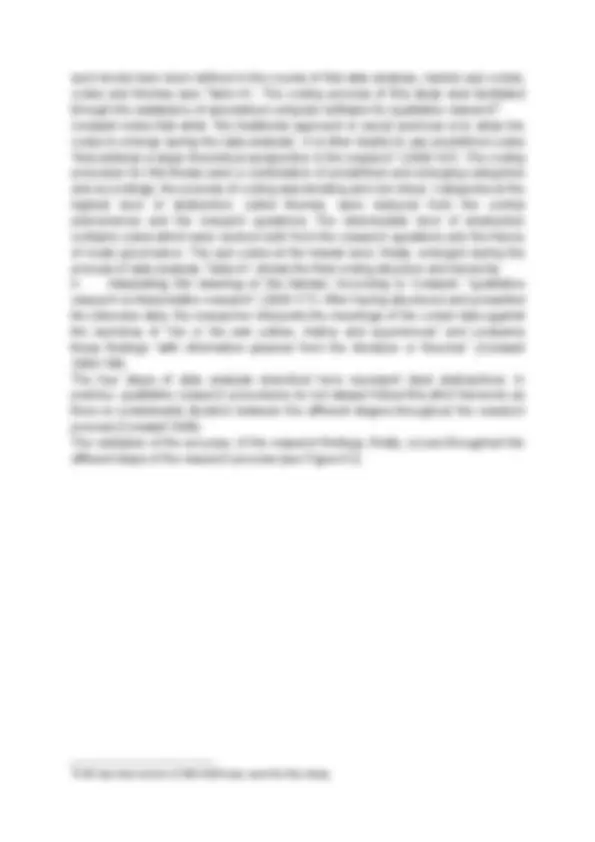





Study with the several resources on Docsity

Earn points by helping other students or get them with a premium plan


Prepare for your exams
Study with the several resources on Docsity

Earn points to download
Earn points by helping other students or get them with a premium plan
Community
Ask the community for help and clear up your study doubts
Discover the best universities in your country according to Docsity users
Free resources
Download our free guides on studying techniques, anxiety management strategies, and thesis advice from Docsity tutors
The methodology used for conducting expert interviews as part of a research project on UN-Water and its role in Global Water Governance. the purposeful sampling strategy, the use of semi-structured anonymous interviews, and the steps of qualitative data analysis, including coding and interpreting themes.
What you will learn
Typology: Study notes
1 / 6

This page cannot be seen from the preview
Don't miss anything!




Creswell noted that in qualitative research, “the intent is not to generalize to a population, but to develop an in-depth exploration of a central phenomenon”, which is best achieved by using purposeful sampling strategies (2005:203). A random sampling strategy would be inappropriate for the exploration of the central phenomenon of this study because the purpose here is not to generate a representative sample and then generalize the results to other coordination mechanisms or other contexts, but rather to learn from people who are 'information rich' and can best help to understand the specific interest of this research, UN-Water and its role in GWG. For the expert interviews, a sampling strategy has been chosen that combines elements of the maximal variation and snowball sampling procedures. The snowball strategy is a form of purposeful sampling in qualitative research that “typically proceeds after a study begins and occurs when the researcher asks participants to recommend other individuals to study” (Creswell 2005:206). The researchers' initial unfamiliarity with the topic and the complexity of the central phenomenon at hand were the decisive factors behind the choice for the snowball approach. The sampling process was initiated by an independent expert who was not interviewed, but exclusively served as 'trigger' to get the different snowballs rolling (c.f. Figure A1). However, once this process was underway, it needed to be steered in certain directions in order to give voice to experts from different backgrounds who might have different perspectives on the central phenomenon. The maximal variation approach allows for obtaining this diversity and thereby accounting for the complexity of the problem at hand. It is “a purposeful sampling strategy in which the researcher samples cases or individuals that differ on some characteristic or trait” (Creswell 2005:204). The characteristic of interest here is the expert's perspective(s) on UN- Water, which can basically fall in one or several of the four categories listed below^1 :
After consideration of the limited time availability for the research process of this MSc thesis and the relative weight of the expert interviews in relation to the literature and document review, a sample size of a total of ten interviews, each between 30 and 45 minutes, has been deemed appropriate.
(^1) This categorization is of course not mutually exclusive but it is exhaustive for the experts under consideration (people who are unfamiliar with UN-Water are not considered as experts here).
Several data collection methods exist in qualitative research and interviews are among the best suited and most commonly used instruments (Kumar 2005; Nohl 2009). Kumar noted that “[o]n one hand, interviewing can be very flexible, when the interviewer has the freedom to formulate questions as they come to mind around the issue being investigated; on the other hand, it can be inflexible, when the investigator has to keep strictly to the questions decided beforehand” (2005:123). A number of approaches can be distinguished on the spectrum between the two extremes of improvisation and determination but the one thing they all have in common is the fact that they do not give any specifications or limit the participants' freedom in answering the various interview questions. For the exploration of the central phenomenon of this research, a semi-structured anonymous interview design with open-ended questions was deemed most appropriate. This choice was based on the following considerations:
(^2) The researcher's approach to the semi-structured interviews was inspired by and largely consistent with the procedures described and recommended by Nohl (2009).
sampling process on several instances in order to assure a certain balance of observer, member, partner and affiliate perspectives. Considering the fact that some experts were able to provide different perspectives, the final ratio of observer: member : partner : affiliate perspectives was 3:3:4:4. It can thus be said that a reasonably good balance between the four perspectives has been achieved. The ratio of female to male participants is 3:8 which mirrors the unfortunate underrepresentation of women in senior UN and other GWI positions. Figure A1 illustrates the two strands of the sampling procedure, the number of experts contacted and interviewed and their respective perspective(s) on UN-Water.
The analysis of the interview data followed a simplified version of the general steps of qualitative data analysis described by Creswell (2009). This generic procedure is illustrated in Figure A2.
Figure A2: Steps of qualitative data analysis (adapted from Creswell 2009:185)
The individual steps of this procedure are listed and described below:
such levels have been defined in the course of this data analysis, namely sub-codes, codes and themes (see Table A1. The coding process of this study was facilitated through the assistance of specialized computer software for qualitative research^3. Creswell notes that while “the traditional approach in social sciences is to allow the codes to emerge during the data analysis”, it is often helpful to use predefined codes “that address a larger theoretical perspective in the research” (2009:187). The coding procedure for this thesis used a combination of predefined and emerging categories and accordingly, the process of coding was iterating and non-linear. Categories at the highest level of abstraction, called themes, were deduced from the central phenomenon and the research questions. The intermediate level of abstraction contains codes which were derived both from the research questions and the theory of nodal governance. The sub-codes at the lowest level, finally, emerged during the process of data analysis. Table A1 shows the final coding structure and hierarchy.
(^3) A 30-day trial version of MAXQDA was used for this study.